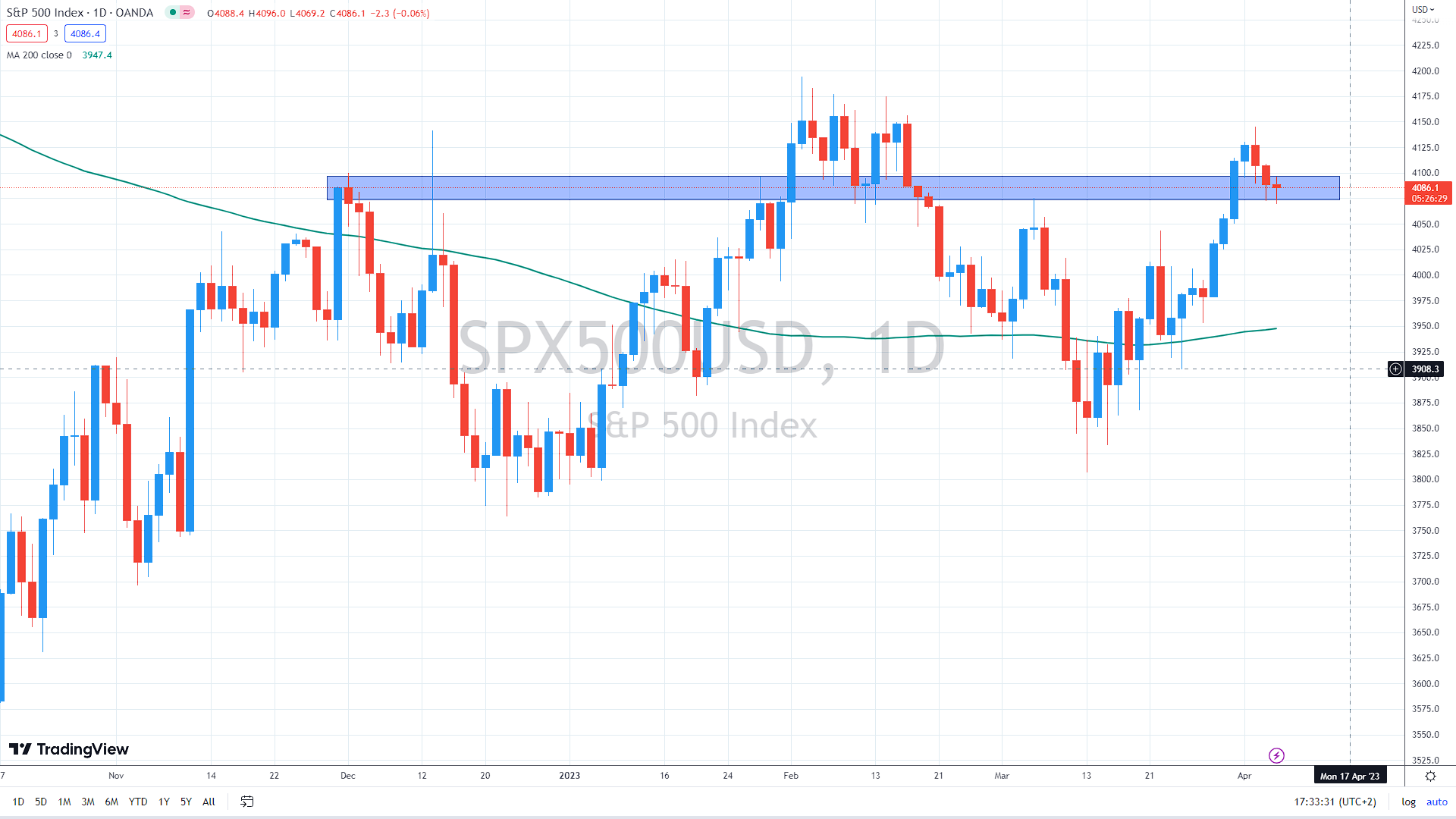The S&P 500 traded somewhat stronger on Wednesday as the EU session will likely be muted due to the US inflation numbers released later in the day.
Nevertheless, the index trades above the significant support zone of previous highs near $4,085. As long as that is the case, the immediate outlook seems bullish.
Inflation in focus; Fed’s governors are slowly leaning dovish
Later today, the United States will release the March Consumer Price Index (CPI), which is anticipated to have increased by 5.2% yearly after rising by 6% in February. The core reading is expected to grow from 5.5% to 5.6%. February inflation decreased, but at a slower rate than projected.
John Williams, president of the Federal Reserve (Fed) Bank of New York, stated on Tuesday that one more rate hike would be an appropriate starting point but recognized that they would have to reduce rates if underlying inflation falls.
You can also read: Gold is gaining slowly as traders wait for fresh data
Furthermore, Patrick Harker, president of the Philadelphia Federal Reserve Bank, stated that he believes the Fed may shortly stop raising interest rates while reaffirming the central bank’s commitment to reducing inflation from its elevated levels.
Also of interest will be the publication of the minutes from the most recent Federal Reserve meeting, which could reveal the policymakers’ thinking as they raised interest rates by 25 basis points last month amid a banking crisis.
In a note, ING analysts stated, “Any signs that the Fed is very close to a peak in rates – and that it will have the ability to cut rates if necessary – would be viewed as risk-positive and dollar-negative.”
IMF sounded pessimistic, again
The International Monetary Fund (IMF) lowered its forecast for global economic growth this year, citing “significant downside risks.”
In its April World Economic Outlook, the IMF predicted that global gross domestic product (GDP) would increase by 2.8%, a decrease from 3.4% last year and a cut of 0.1% from the group’s January forecast. It projects a 3% increase in GDP in 2024.
Another interesting article: Apple turns higher, remains bullish and eyes next resistance
The IMF noted that advanced economies would experience a particularly pronounced decline in growth this year, from 2.7% in 2022 to 1.3% in 2023. Emerging markets and developing economies will decline marginally, from 4% to 3.9%.
Pierre-Olivier Gourinchas, the chief economist of the International Monetary Fund, stated that the global economy is “still recovering from the unprecedented upheavals of the past three years, and the recent banking turmoil has heightened uncertainty.”
As a result, recession concerns have “gained prominence,” and persistently high inflation persists, according to Gourinchas.
The IMF cautioned that as the “haze surrounding current and prospective economic conditions thickens,” it will be difficult for government policymakers to reduce prices while avoiding a recession and maintaining financial stability. However, it was emphasized that as long as financial pressure is not systemic, the central bank’s top priority is combating inflation.

S&P 500 daily chart, source: author´s analysis, tradingview.com










Comments
Post has no comment yet.